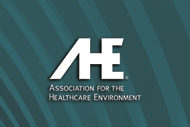Poor communication skills used by leaders at the top of a health care organization can have a devastating impact on hospital staff and even the perception of the hospital within the local community.
Such situations underscore the importance of open and clear communication. Admittedly, this can be difficult, particularly in environmental services (ES) departments, where there are often many obstacles to overcome. Socioeconomic, gender, multigenerational, cultural and language differences can be obstacles to establishing effective communication. In fact, I once managed a department in which eight different countries were represented. Such diversity brought both joy (potlucks were interesting) and challenges (language skills were a struggle).
But communication styles are vitally important and involve more than the words we speak. I have read that only 7 percent of communication is expressed verbally, while 38 percent of communication is through the tone of our voices. Interestingly, the greatest area of communication, 55 percent, is through body language. Clearly, we must watch how we communicate, especially in tone and body language.
Listening before speaking is another important practice for ES leaders. Staff members often will take the initiative to come to our offices with issues, so we need to listen. Effective listening informs our decision-making and prepares us to take appropriate action.
How often do you have status meetings? Daily briefings are an excellent way to disseminate information. Best kept to five or 10 minutes, daily briefings are used to communicate census updates, changes in schedules, data updates and other brief, on-the-spot activities.
ES leaders also can schedule and hold traditional staff meetings for other staff communication needs. Frequently, the debate is whether to consider these meetings mandatory. Ultimately, this may depend on the organization's policy. However, keep in mind that a substantial amount of information typically is provided at these meetings. In some situations, this forum may be the only one in which staff members can receive essential industry, facility or department-specific information.
It is also vitally important for ES leaders to be transparent during meetings. People are perceptive and discerning. Holding back can be perceived as dishonesty and can jeopardize credibility, causing team members to distrust the ES department leader.
One final communication practice is for ES leaders to inform staff that they will support them when challenges arise. One example of this is alleged theft. Staff often complain that ES is blamed when items are missing. My response is that they are asked first about missing items because ES staff visit all areas of the organization. I communicate to staff that they can provide valuable information concerning the items, which can be helpful in leading to recovery.
I communicate to staff my trust in them and my support in areas concerning work performance. In this way we are supporting our staff and, at the same time, communicating effectively.
This month's column was written by Kent L. Miller, CHESP, president of AHE's board of directors.
INSIGHT
Valuable resources
AHE has a comprehensive educational and professional development program that engages all levels of experience.
• Webinar — Measuring Clean: Effective Audit Tools and Practices. This event will be held at 11 a.m. Central Standard Time on May 17. It is free for AHE members and $139 for nonmembers.
• Online course — Principles of Effective Linen Management. This course lasts five weeks and dates are May 14 through June 22. It costs $109 for members and $149 for nonmembers. The course provides an overview of textile challenges such as utilization, infection prevention, laundry management operations and Healthcare Laundry Accreditation Council standards.
• Online course — CHESP Study Group. This course lasts six weeks and the dates are May 14 through June 29. It costs $109 for members and $149 for nonmembers. The course offers the opportunity for participants to prepare for the Certified Healthcare Environmental Services Professional exam in a collaborative online learning environment.
• Conference — EXCHANGE 2012 (formerly known as the AHE Annual Conference & Healthcare Marketplace). This will be Sept. 16-19 in Phoenix.
For more, visit www.AHE.org or email AHE@aha.org.



